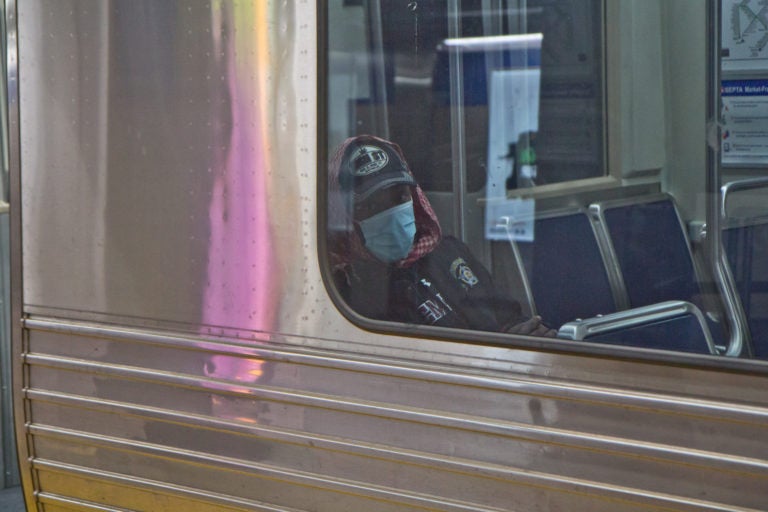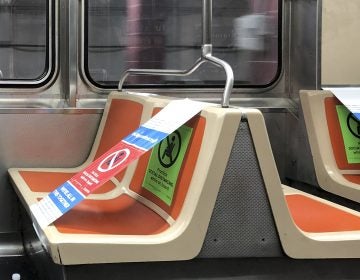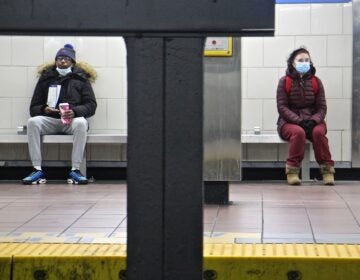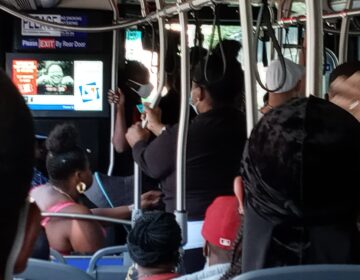Most SEPTA transit service returning; new rules for social distancing
Trains and buses will return to regular schedules on May 17. The service is “not going to be perfect,” said Leslie Richards, SEPTA general manager.

A SEPTA rider dons a surgical mask. (Kimberly Paynter/WHYY)
SEPTA is preparing for offices, schools and businesses to reopen with a plan to resume regular transit service later this month.
Starting the week of May 17, regular weekday and weekend service will resume on most bus and trolley routes, along with Market-Frankford, Broad Street and Norristown High Speed Lines. Front-door boarding and fare payment will resume on buses and trolleys.
“This service is not going to be perfect but it is what we can do right now to serve essential workers and obviously prepare for the expected increase in service needs in the coming weeks,” said Leslie Richards, SEPTA general manager.
Rider limits of 20 per bus, 25 per trolley and 30 on the Norristown High Speed Line implemented in early April will continue to be enforced, and operators may pass stops if the vehicle exceeds those numbers.
For those who make it onto a vehicle, new signage will encourage social distancing, and seats will be marked off to help demonstrate the distance that customers should keep from each other.
Riders will be required to stay six feet away from operators once they board. A yellow line on the floor will set the boundary.
Furthermore, all vehicles in service will have shields for operators. Though front-door boarding will return, riders will exit vehicles from the rear doors to maintain distance between operators and other riders who are entering. Riders are strongly encouraged to cover their faces before boarding, though it will not be an enforced mandate.
SEPTA has not lifted its recommendation to avoid non-essential trips.
Richards called on riders to consider the health of SEPTA employees who are “risking” their health by “going to work every day.”
“I would hope that they would be considerate of that and wear masks as well as be considerate of the other riders,” she said.
Nearly exactly one month ago, the authority began running a Lifeline Service Schedule that shut down about half of the bus and trolley routes and closed several subway stations. It also implemented a headway schedule that ran buses every 15 to 30 minutes to accommodate staffing issues due to absenteeism.
The reduced service led to longer commutes for some essential workers and crowding on buses and at bus stops.
Richards warned that SEPTA will still miss some trips and runs due to absenteeism.
Scott Sauer, assistant general manager of operations, described the return of service as part of a plan “to be in front of any return or easing of restrictions by any local or state governments.”
“We want to be ready to handle folks when they come back,” he said.
WHYY is your source for fact-based, in-depth journalism and information. As a nonprofit organization, we rely on financial support from readers like you. Please give today.




![CoronavirusPandemic_1024x512[1]](https://whyy.org/wp-content/uploads/2020/03/CoronavirusPandemic_1024x5121-300x150.jpg)



